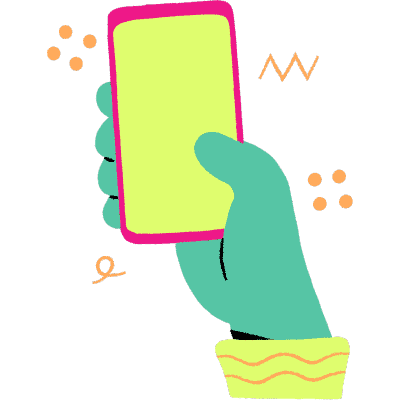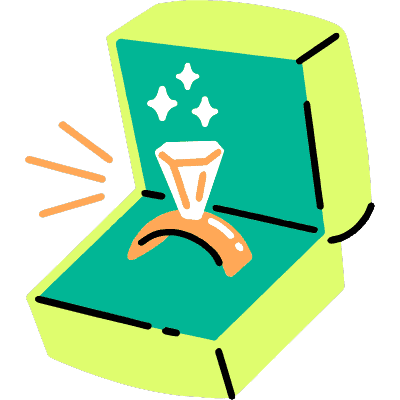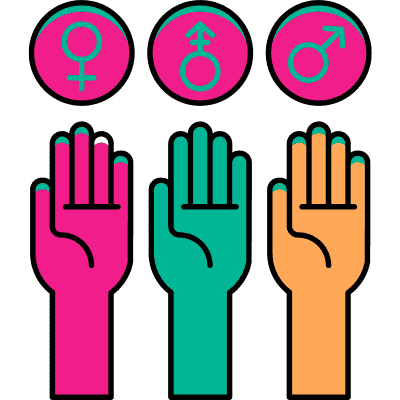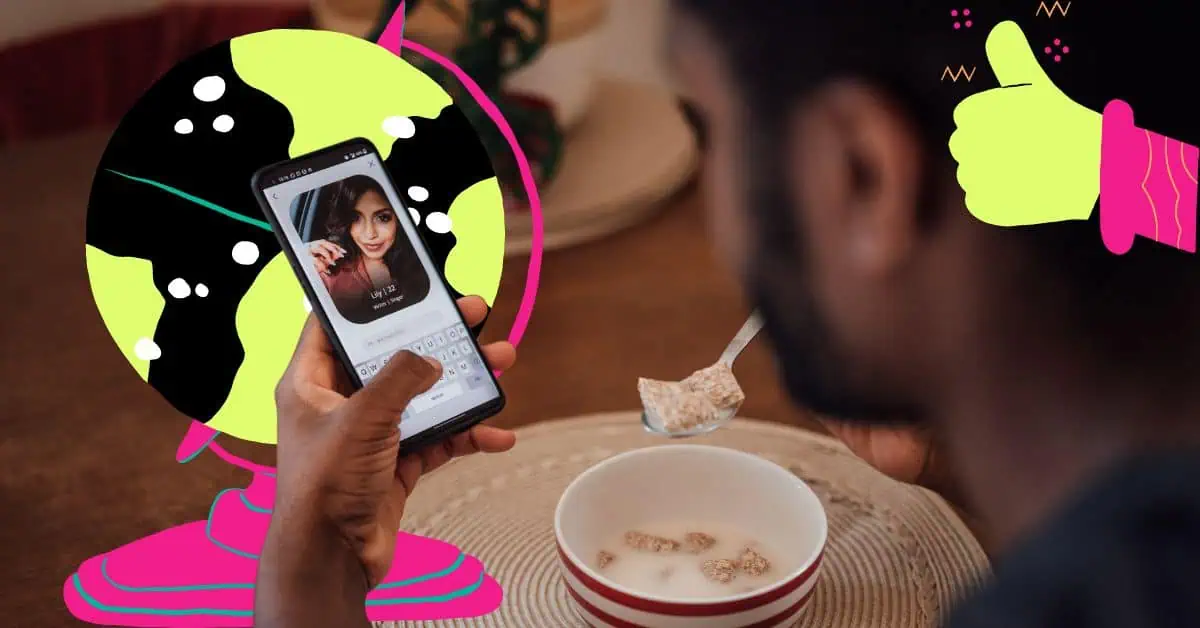Over the past few years, dating apps have seen a huge surge in popularity in developing countries. Were you aware that the global user base for dating apps hit 350 million in 2023? That’s an amazing increase from the previous year. And this upward trend isn’t just in urban areas; even regions with limited internet access are using dating apps.
While these platforms first gained traction in developed countries, they’re now spreading like wildfire across developing regions. Asia, particularly China and India, is seen as the biggest growth area. In 2022, the Asia Pacific region saw the fastest growth in online dating, with a market value of around $1.76 billion. A large single population, urbanization, and more consumer purchasing power fueled it.
How are dating apps reshaping romantic relationships in these areas? They are breaking down traditional barriers to introduce new ways of connecting, ans are challenging old norms—which means lots more opportunities for love where old-school, traditional matchmaking once ruled!
The Expansion of Internet and Smartphone Access
The rapid expansion of internet and smartphone access in developing countries is the main star in terms of reshaping how people connect and interact in romantic relationships. As more people get online and buy or access smartphones, the popularity of dating apps has swelled, marking an appreciable change in social interactions in these regions.

Growth in Internet Penetration
Over the last few years, internet penetration in developing countries has witnessed weighty progress—as of 2023, around 67% of the global population is online, with millions of new users coming from developing regions. Countries like Kenya and Vietnam have seen a notable increase in internet users due to the introduction of more affordable mobile data plans.
In Kenya, the accessibility of cheaper data plans has resulted in across-the-board internet adoption, so more people can be online, meaning they can use dating apps! Expanding internet access is a main driver of the expansion of digital dating platforms across the regions.

Smartphone Adoption
The affordability and availability of smartphones have further accelerated the adoption of dating apps in developing countries. Low-cost smartphone brands like Xiaomi and Tecno have made it possible for millions of people to own internet-enabled devices. In Asia-Pacific, particularly in countries like India and China, the penetration of smartphones has been quick and opened up more opportunities for digital interaction, making dating apps accessible to a bigger audience. The increase in smartphone ownership has directly contributed to the rise in online dating, as people now have the necessary tools to engage with these platforms.

Increased Connectivity in Rural and Urban Areas
The improvement in connectivity across both rural and urban areas has also played an important part in bringing a greater number of people into the digital world. In most developing countries, infrastructure advancements like the installation of new mobile towers and the expansion of free public Wi-Fi hotspots have improved connectivity.
As one example, the efforts in Ethiopia to increase mobile internet coverage are gradually overcoming the obstacles that are posed by the digital divide so more rural populations can access online services like dating apps—better connectivity is bridging the divide between urban and rural areas, making widespread adoption of digital dating platforms possible.
Cultural Shifts and Challenges
Dating apps are no longer a flash in the pan— they’re modifying how people connect, particularly in societies where tradition holds a lot of sway. So, how does this fit in with culture? Along with the transformative possibilities they bring to the table, there are some trials and tribulations that come with it in conservative cultures.

Traditional Dating Norms vs. Modern Dating Apps
In most conservative societies, traditional approaches to finding a romantic partner—like arranged marriages and family-mediated matchmaking—are still common and ingrained. These practices are not merely cultural preferences but are seen as a mainstay of social stability. Yet dating apps challenge these established norms by giving people the freedom to choose their partners.
Countries like India and Pakistan, where arranged marriages are still quite prevalent, are where young people are turning to reputable dating apps to explore relationships on their own terms. They let users meet people outside of their immediate social circles, something that family members have traditionally facilitated. This change is creating a new era where the autonomy afforded by dating apps is in direct conflict with the expectations of familial involvement. The tension between these modern practices and traditional expectations exists, and although slow, there is a noticeable change in how romantic relationships are being formed in these societies.

Social Stigmas and Privacy Concerns
Despite the progressive usage of dating apps, a lot of users in conservative regions face some obstacles due to societal stigmas and privacy concerns. In places where dating outside of marriage or without family approval is frowned upon, the act of using a dating app is a bit scary. In Middle Eastern countries, where cultural and religious norms are strict, being active on a dating app can come with serious repercussions.
There is a pervasive fear of being judged or ostracized if one’s online dating activities are discovered, and is something that is especially acute for women, who will face way harsher scrutiny than men. In some cases, the consequences of exposure go well past mere social disapproval to violence and legal repercussions, particularly in countries with strict laws against public displays of affection or premarital relationships. Obviously, these fears will deter some people from using dating apps or force them to take extreme precautions to keep their anonymity online.
And for LGBTQIA+ people in these areas, the stakes are even higher—in most conservative societies, homosexuality is not only stigmatized but also criminalized. For these users, dating apps are the only means of meeting others in a safe and secretive way. The fear of being outed, however, is always present, as the consequences are severe—like life and death.

Empowerment Through Anonymity
One of the most powerful things that come with dating apps is the anonymity they can give users. This feature is super important for users in conservative societies, where cultural or religious norms restrict the freedom to explore romantic relationships. For women, dating apps give them a way to engage in relationships on their own terms, free from the immediate oversight of their families or communities. A sense of control can be incredibly empowering—women can make choices about their personal lives that would otherwise be difficult or downright impossible.
Moreover, dating apps have become a life-saving tool for LGBTQIA+ communities in these regions, as they are societies where being openly gay or bisexual is not just socially unacceptable but also illegal. These platforms are a space for people to connect with others like them and they have the ability to stay anonymous or to manage one’s online identity carefully. That means they have a safety buffer that they wouldn’t have IRL. Anonymity means they can explore their identities and relationships in ways that are not possible in their daily lives.
Popular Dating Apps in Developing Countries
As online dating continues to gain traction in developing regions, both global and local platforms are making inroads. Below is a glance at how these apps are adapting to local cultures and the novel features that come with the platforms!

Global Giants Making Their Mark
Some dating apps have gone international; Tinder, Bumble, and OkCupid are becoming household names in developing countries. To flourish in these markets, these platforms have implemented different localization strategies.
Tinder has introduced features that cater to the specific needs of users in different regions, like language support for multiple local languages and payment models that match up with local economic realities, like mobile wallet integration or tiered pricing that takes lower-income brackets into account. Bumble’s emphasis on women making the first move has resonated super well in areas where gender dynamics are traditionally more restrictive, meaning a safer space for women to online date.
The apps have also made a few cultural adaptations, like offering options to indicate religious and cultural preferences on dating profiles, which are really important in regions where these factors are important in relationships. This has helped global apps stay relevant and expand their user bases that might otherwise have been resistant to Western dating norms.
Rise of Homegrown Dating Apps
We have the global players, but don’t count out the little guys! There are up-and-coming local dating apps having success that are tailored specifically to the needs and cultural contexts of users in developing countries, including the following:

- India: Local apps like TrulyMadly and Aisle have carved out a niche by concentrating on serious relationships over casual dating. TrulyMadly focuses on trust and safety with features like profile verification and compatibility quizzes. Aisle targets a more mature audience looking for meaningful connections, often with marriage in mind. Another rising app, Shaadi.com, is dominating the matchmaking space and focuses on arranged marriages, adapting its platform to include some modern features while staying true to traditional values.
- Nigeria: In Nigeria, apps such as DateMatch and Bingdum are tailored to local dating customs, with a focus on both long-term relationships and family involvement and more casual encounters. They are designed to respect and incorporate the cultural nuances of dating in Nigeria, where community and family approval is integral to the process. The apps also provide local payment solutions and support, making them accessible to a larger audience.
- Southeast Asia: In Southeast Asia, apps like Tantan (popular in China) and Paktor (used in Singapore and Malaysia) have gained popularity by combining Western-style swiping features with a stronger emphasis on long-term relationships and compatibility. These apps integrate local cultural elements, like zodiac sign compatibility, which has a hand in some Southeast Asian cultures.

How These Apps Differ from Western Counterparts
Dating apps in developing countries tend to prioritize long-term relationships and marriage over casual dating, showing the cultural values of these regions. Unlike their Western counterparts, which can focus on immediate connections and casual dating, these platforms are made to help users find partners with common long-term goals.
Most of these apps have features that respect cultural and religious sensitivities, like filters for religious beliefs, family-oriented profiles, and even options for parental involvement in the matchmaking process—cultural sensitivity is a must in regions where dating is still largely viewed through the lens of family and community.
Additionally, the economic realities of users in developing countries have fueled the adoption of alternative payment models, and apps have more affordable subscription tiers or accept payments through local methods like mobile money, which is used instead of credit cards in most developing regions.
The Impact of Dating Apps on Society
Dating apps have fundamentally changed how people connect, especially in societies where traditional customs and roles have long molded romantic relationships. The ways these platforms are influencing various aspects of society, from personal relationships to broader cultural shifts, is really quite interesting!
Redefining Relationships and Romance
Dating apps are also altering how relationships are formed, particularly among the younger generations. In cultures where arranged marriages have been the norm, like in India and other parts of South Asia, these platforms are giving people the autonomy to explore romantic relationships on their own terms. This change represents, for some, a welcome departure from the traditional model where family and societal expectations heavily dictated who and how one should marry. Instead, younger people are now looking for personal compatibility, common interests, and emotional connection over sticking to the customs that once guided almost all matrimonial choices.

And this isn’t just limited to South Asia! In countries across Africa, Southeast Asia, and the Middle East, dating apps are becoming tools for younger people to connect outside the boundaries of their immediate social and familial circles. Nigerians have long used community and family approval in terms of forming relationships, and dating apps are giving singles another way to make personal decisions about their romantic lives without that external influence.
Dating apps are also contributing to the decline of certain traditional practices—the concept of “courtship” as a formal, family-supervised process is gradually being replaced by a more casual and individualistic approach to dating. This doesn’t mean that traditional values are entirely disappearing, but they are being adapted to fit the new digital landscape. In many scenarios, people still seek out relationships that would be acceptable to their families, but they are using apps to find those partners in a more private and self-directed way.
The influence of dating apps is also evident in how they are challenging gender roles in relationships. Traditionally, men were expected to initiate relationships, and women were expected to be passive in the courtship process. But apps like Bumble are changing these dynamics for the better by requiring women to make the first move, encouraging a new approach to dating where women feel unshackled to take control of their romantic lives—a consequential shift in cultures where this behavior would have been frowned upon in the past.
New Opportunities for Intercultural Connections
Dating apps are also reducing cultural and geographic divides—people from different regions and backgrounds can connect in ways that were previously unheard of and impossible. This is particularly important in our increasingly globalized world, where people live, work, and travel across borders. The ability to meet and build relationships with people from different cultures and countries is one of the most profound impacts of these platforms.

Tinder’s Passport feature lets users match with people from other countries so they can make connections that transcend geographic boundaries. This has meant an increase in cross-cultural relationships, which are way more common with people who travel and work internationally. And these types of relationships involve negotiating cultural differences and learning to appreciate different perspectives, which can add to and improve the experience of both partners!
Cross-border connections are resulting in unions and marriages that would not have been possible a generation ago. A user in the United States can connect with someone in Southeast Asia, and after a long-distance relationship, they eventually get married! Such relationships challenge traditional notions of compatibility that are based on common cultural backgrounds, showing that love and partnership can indeed thrive despite—or perhaps because of—cultural differences.
Dating apps are also helping to break down stereotypes and prejudices by enabling direct, personal interactions between people from different cultures. This kind of intercultural exchange is invaluable in promoting understanding and decreasing xenophobia. As people engage with others from different cultural backgrounds, they are likely to develop empathy and a broader worldview, which contributes to more inclusive societies!
Impact on Marriage and Family Structures
The rise of dating apps is also having a noticeable impact on marriage and family structures, particularly in developing countries. As countless people meet their partners online, the conventional process of courtship, which involves the approval of families and communities, is being redefined. This shift is particularly evident in countries where arranged marriages have been the status quo.
In such societies, dating apps are giving people control over their choice of partners, which is leading to changes in how marriages are initiated and conducted. For example, couples who meet on dating apps are now living together before marriage, a practice that was previously taboo in a lot of cultures. This trend is slowly being accepted as part of the modern relationship landscape, especially among younger generations.

The change in marriage practices is also affecting family dynamics—in traditional settings, families have usually played a central role in arranging marriages. Families want the match to be socially and economically advantageous. But with the rise of dating apps, that is shifting towards individual choice and personal compatibility. This doesn’t mean that family influence has totally disappeared, but it is becoming less central to the decision-making process.
More importantly, increased autonomy in choosing a partner is contributing to egalitarian relationships—in societies where gender roles have been rigidly defined, dating apps mean women are able to take a more active role in their romantic lives, which is altering the power dynamics within marriages. As a result, relationships are based on mutual respect and shared responsibilities instead of on traditional hierarchies.
In some cases, this shift is also making changes in the legal and social frameworks that govern marriage. There is a burgeoning acceptance of diverse family structures, including those formed by same-sex couples, which is being supported by the visibility and normalization provided by dating apps. These platforms are giving the LGBTQIA+ community a space to meet and form relationships, which is inching toward broader social acceptance and legal recognition of their rights.
Shifts in Gender Roles
One of the biggest impacts of dating apps is their role in shifting gender roles, particularly in societies with traditionally patriarchal norms. Women have more agency in their romantic lives, challenging long-standing expectations about how men and women should behave in relationships.
Some cultures expect women to be passive participants in the dating process, with men always taking the lead in initiating relationships. Again, Bumble is changing this dynamic by letting women make the first move, a feature that empowers and encourages women to take control of their dating lives, a radical shift in cultures where this kind of behavior has, in the past, been discouraged or even stigmatized.

This empowerment is not just about who sends the first message; it shows a larger shift in how gender roles are perceived and enacted in relationships. Women on these platforms are more likely to express their preferences and assert their boundaries, which adds to balanced and respectful relationships. This is super important in regions where traditional gender roles have limited women’s autonomy in their personal lives.
The visibility and normalization of different types of relationships on dating apps are doing yeoman’s work in challenging stereotypes about gender and sexuality—the presence of LGBTQIA+ people on these platforms is helping to break down the binary gender norms that have dominated most cultures. By providing a space for diverse identities and expressions, dating apps are contributing to a more inclusive understanding of gender and relationships.
Traditional notions of masculinity and femininity are being questioned as people navigate the complexities of online dating. For example, the expectation that men should always be the protectors and providers is being challenged by relationships where both partners share responsibilities equally. Similarly, the idea that women should be submissive or nurturing is being replaced by a more nuanced understanding of partnership, where both people contribute to the relationship in ways that reflect their strengths and desires.
The Role of Technology in Overcoming Barriers
Technology has become a much-needed tool in breaking down barriers that are used to limit people’s ability to connect romantically. In developing regions, dating apps are expanding opportunities for connection, making long-distance relationships more viable, and guaranteeing user safety and privacy!

Access to New Opportunities
Dating apps have dramatically altered the way people in remote areas connect by widening the pool of potential partners. Previously, geographic isolation meant really limited options for meeting new people, especially in areas where social networks were tightly knit and local. But with the advent of these platforms, people can now interact with others way beyond their immediate surroundings. This shift is helping to diminish the impact of physical distance on romantic possibilities so that people are free to explore relationships across regions and even countries!
People living in rural or less urbanized areas are using these platforms to connect with those from more populous or culturally diverse locations. This access doesn’t just increase their chances of finding compatible partners—it also introduces them to different cultures and lifestyles.

Facilitating Long-Distance Relationships
Technology has fundamentally transformed how long-distance relationships are managed, all for the better! When you combine dating apps with modern communication tools, it has become easier than ever to maintain relationships across long distances. This is really important for those in developing countries who might be looking for romantic partners abroad.
Video calls, virtual date nights, and real-time messaging apps are must-have features for those who are geographically separated. They allow couples to take part in everyday experiences—like watching movies together or just talking for hours on a video call—making the physical distance a little less painful. The invention of virtual reality (VR) experiences is also helping long-distance relationships by providing a sense of presence and interaction that closely resembles IRL encounters.

Innovations for Privacy and Security
In regions where dating is not universally accepted or could be dangerous, technology is here to help with solutions that ensure user safety and privacy. Dating apps are constantly introducing new features that are designed to protect users in environments where privacy is a concern. These innovations include options like profile blurring, discreet app icons, and strong encryption to keep interactions secure.
Some apps give users the ability to blur or hide user profiles from those who haven’t been explicitly approved by the user, protecting them from any unwanted attention. Discreet icons and app names mean users can maintain their privacy, minimizing the danger of exposure in areas where dating is stigmatized. Additionally, strong encryption is employed to safeguard personal data and chats—users can communicate safely without fear of their info being accessed by unauthorized parties.
Challenges for Dating Apps in Developing Countries
Dating apps have opened up new avenues for people to connect, but in developing countries, they encounter several hurdles that can limit their effectiveness and reach. Below, we look at some of the biggest ones these platforms are up against.

Internet and Technological Limitations
A pretty momentous challenge for dating apps in developing regions is the inconsistency of internet access and the poor state of digital infrastructure. In some rural and underserved areas, internet connectivity is unreliable, making it harder for users to access these platforms in a consistent way. And the limited reach of mobile networks and frequent power outages further complicate access. These issues are l compounded by lower levels of digital literacy, which prevent potential users from fully engaging with the technology available to them.
For dating apps to be successful in these sorts of environments, there is a need for improved infrastructure and initiatives aimed at boosting digital literacy among populations that are less familiar with online services.

Monetization and Payment Challenges
Implementing paid subscription models brings about another major hurdle for dating apps in developing countries. The banking infrastructure in many of these regions is less developed, and online payment systems are usually not universally adopted or even trusted. This makes it difficult or impossible for users to pay for premium features or subscriptions, which you need to do with most dating apps for them to be of any use.
In cash-based economies, access to credit or debit cards—which are required for online transactions—is limited. While mobile money has gotten some traction in these countries, it is not universally available or integrated into all platforms. This means barriers to monetization, which impacts the growth and sustainability of dating apps in these markets.
To overcome these challenges, dating apps need to explore alternative payment methods tailored to the realities of these economies, like mobile wallets or partnerships with local banks that facilitate easier transactions.

Regulatory and Legal Issues
Legal and regulatory challenges also put up obstacles for dating apps in certain developing countries. In some regions, governments impose strict regulations on online activities, including dating, due to cultural, religious, or political reasons. In countries with restrictive relationship laws or censorship, dating apps can face bans or heavy regulation, making it hard for them to operate freely.
Then there are the concerns about data privacy and protection that have resulted in the implementation of strict laws in some countries, requiring companies to store user data locally or comply with other legal mandates—regulatory compliance means operational challenges for dating apps, as they have to negotiate a complicated landscape while also protecting user privacy and abiding with local laws.

Misinformation and Scams
This isn’t just a concern for developing countries—it’s everywhere, but at least most are aware of the danger of scams on dating apps! The prevalence of scams and fraudulent activities is alarming in all areas, but users in these areas are more prone to be targeted by scammers who create fake dating profiles or catfish them into romance scams, exploiting emotional connections to extract money or personal info from unsuspecting victims. People in these regions might be less familiar with online safety practices.
The impact of fraudulent activities means a loss of trust among users—they’ll be wary of or just stop engaging with dating apps altogether. To combat this, dating apps have to invest in the strongest security measures, like AI-driven tools to detect and block fraudulent accounts, and provide education to users on how to spot and steer clear of scams!
Future Outlook
As dating apps continue their expansion into developing countries, their future looks good! It’s being fueled by technological advancements and changing societal norms, and below is an exploration of the possible growth, social impact, and the increasing globalization of romance that is being facilitated by these platforms.

Growing Popularity and Continued Expansion
The popularity of dating apps in developing countries is expected to grow considerably as internet access becomes universal and societal norms continue to evolve. With the increasing availability of affordable smartphones and improved internet connectivity, even in rural areas, more people have access to these platforms. This growth is not just limited to urban centers—it’s spreading to remote regions.
This trend is particularly evident in regions like Asia-Pacific, where countries like India and China are seeing huge growth in the user base of dating apps. The increasing urbanization and rising purchasing power in these regions are further fueling the adoption of these platforms. As societal attitudes towards online dating become more accepting, the user base is expected to diversify, including older generations who may have been more hesitant to use this type of technology in the past.

Potential for Social and Economic Impact
As more people turn to these platforms to find romantic partners, traditional matchmaking practices could become less dominant, giving way to more self-directed approaches to relationships. A change like this could contribute to a shift in how marriage is perceived, with a bigger emphasis on personal choice and compatibility over familial or societal expectations.
Dating apps could contribute to economic opportunities in developing regions! The growth of the digital economy around these platforms includes the potential for entrepreneurship within app-related services, like personal matchmaking services, relationship coaching, and even local events and gatherings for app users. The integration of AI and data-driven insights could also open up new business opportunities, and local entrepreneurs can make tailored services that cater to specific cultural or regional preferences.

Globalization of Romance
Dating apps are invaluable to the globalization of romance—cultural and geographical boundaries are becoming almost irrelevant. They enable users to connect with people from different parts of the world, building cross-cultural relationships that would not have been possible otherwise. The advent of virtual dating features and the ability to connect with users across borders are making international relationships less complicated and commonplace.
As the world keeps interconnecting, the concept of romance is changing to show a global perspective. Dating apps are at the forefront of this change, giving users the chance to explore relationships beyond their immediate cultural or geographical context. This doesn’t just enhance personal experiences—it also adds to a better understanding and appreciation of different cultures and traditions.
Conclusion
Dating apps are continuing their takeover in developing countries and are changing how people connect, form relationships, and even look at romance. In another few years, who knows? It could become the rule instead of the exception—it happened here, so you never know!
Dating apps deliver new opportunities and freedoms, but they also come with some challenges that have to be taken into account, too! There are issues concerning technological limitations, payment systems, legal regulations, and user safety that have to be addressed as these platforms continue to gain ground on a global scale. The balance between leveraging technology for positive social change and managing its potential risks will be the biggest factor in making sure that dating apps keep adding to society in a positive way!
It’s kinda amazing how technology is influencing relationships in your own community and the impact of dating apps worldwide, isn’t it? We think so! Dating apps are doing more than just introducing people—they’re influencing cultural norms and changing how relationships are viewed on a global scale.
